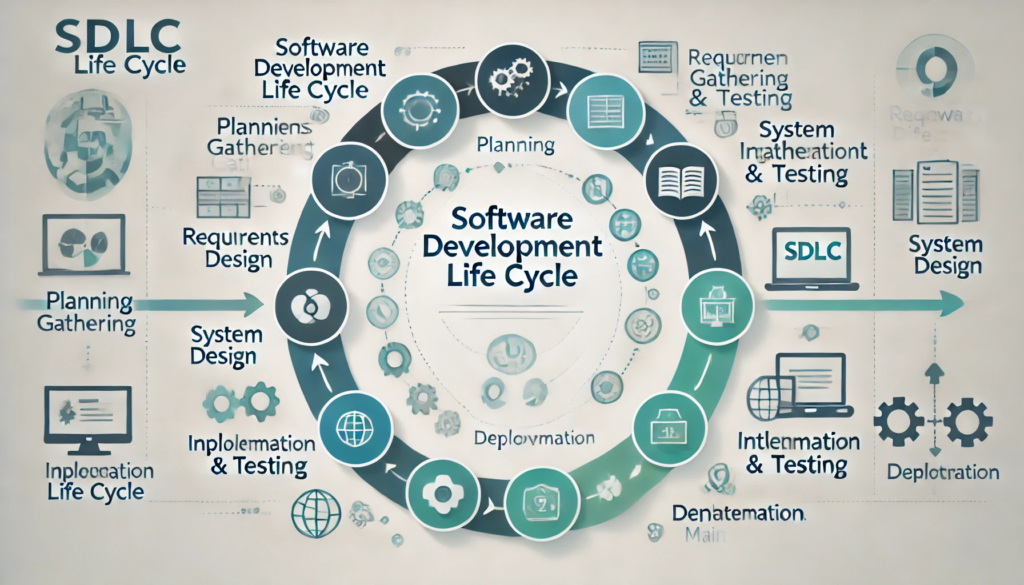The waterfall model of software development is a process that consists of several phases such as requirements gathering, design, implementation, testing, and maintenance. Each of these phases is done before the start of another. It really resembles a cascading waterfall. That model has a very rigid, linear approach with very limited alternatives to make changes in case a phase is completed.
These stages can be characterized and divided up in other ways, including the following:
1. Project Planning and Feasibility Study
Objective: Define project goals and assess viability.
Feasibility Analysis: Evaluate technical, operational, and economic feasibility to confirm the project’s value and practicality.
Outcome: A project charter and feasibility report guide the next steps.
2. System Analysis and Requirements Definition
Goal: Gather and refine requirements through stakeholder collaboration.
Key Activities: Identify functional and non-functional needs using interviews, observations, and document analysis.
Outcome: A detailed requirements specification to drive system design.
3. System Design
Objective: Create a blueprint covering UI, data structures, and business logic.
Details: Includes screen layouts, process flows, and technical documentation.
Outcome: A design document that directs the development phase.
4. Implementation
Activity: Developers write, compile, and integrate code according to design specifications.
Standards: Adherence to coding best practices and use of tools like version control.
Outcome: The complete code base ready for integration and testing.
5. Integration and Testing
Purpose: Combine modules and test for functionality, performance, and usability.
Testing Types: Unit, integration, system, and user acceptance testing to identify and resolve issues.
Outcome: A verified, optimized software system.
6. Acceptance, Installation, and Deployment
Objective: Get approval, install in the production environment, and begin user operations.
Process: May involve phased rollout and user training.
Outcome: The live system is operational and monitored for early issues.
7. Ongoing Maintenance and Support
Activities: Routine monitoring, bug fixes, updates, and potential enhancements.
Goal: Ensure continued performance and relevance of the system.
Outcome: A well-maintained and supported software product.
Advantages
- Simple and easy to use.
- Easy to manage because the model is rigid-for every phase, there is something that has to be produced in terms of deliverable.
- There is a review for each phase.
- Phases are processed and completed in one at a time.
- Works well for smaller projects where requirements are very well understood.
Disadvantages
- Adjusting scope in the life cycle can be fatal to a project.
- No working software is made until late in the life cycle.
- High amounts of risk and uncertainty.
- Very poor model for complex as well as object-oriented projects.
- Poor model for long and ongoing projects.
- Bad model for requirements with medium to high risk of change.
